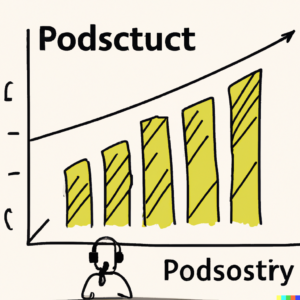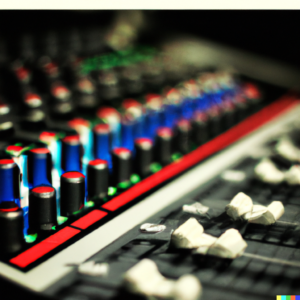How Good Should My Podcast Audio Be?
The quick answer is – Better! If you’re curious if your audio is good enough then it’s not. There’s reason books are printed and not copied from handwriting. We’ve become accustomed to the cleanliness and legibility of certain fonts. So, we see them time and again. It’s become the standard, the expectation, and the only way to guarantee that the book is never at fault for circulating a story.
The same standard is set for audio. Terrestrial radio stations have their standard as well as broadcast TV. If you’ve ever heard of ACX guidelines, the most stringent audio test by Audible, then you know there are standards out there. But most people aren’t aware of what’s good sound – BUT we are!
Here are some quick tips on how to have better sound:
Understand that reverb is singer’s best friend and a speakers worst nightmare. Reverb has a smoothing effect, which helps singers to sound in tune. The multiplying effect of voice over reverb means that pitch shifts will have an “averaging effect” that will make singers sound – better.
That same smoothing effect tears away at clarity. We need articulation for speech to be clear. This is best achieved by having a “tight” sounding room.
A tight room is something like a closet full of clothes, while something with a lot of reverb, or echo, is more like an empty bathroom. Everyone sounds better singing in the shower, right?
The next best way to improve your sound is mic proximity.
How close should I be to the microphone? Well, all microphones are a little bit different, but most podcasting microphones like a voice around 3-6 inches from he mic.
Too close, and you’ll sound muffled. Too far, and you’ll sound distant no matter how loud your turn up the recording. We don’t want to sound distant as a podcaster, we want to be in someone’s head, clear, and controlled. With a distant sound, we cause the listener to either strain their ears to make out what you’re saying, or pull back because you’re yelling.
The final way to improve your audio is to learn a little about audio processing.
Compression helps to shape some of those fricatives, sibilants, and overall transient sounds, the non-vowel sounds. As well, it can help to reduce the volume range on a dynamic recording. This will keep the listener from having to turn the volume up or down throughout the show.
Equalization helps to fine-tune each voice, microphone recording, and the room in which it was recorded. When things aren’t perfect, you can fix the muffled sound, the sibilance, or dullness of a recording by manipulation the frequency spectrum by use of equalizer.
I suppose if you’re unwilling to do all of the above, you can learn to articulate like a Shakespearian actor. If your diction is king of the stage, you might be able to manipulate your voice enough to have a decent chance of a clean-ish recording. But remember, there is a standard. Maybe learn to meet the standard before you start experimenting with new fonts.







